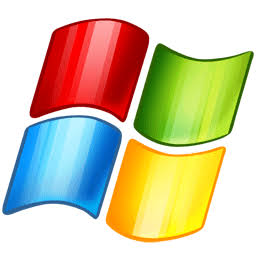Title
Back in the day X was a great protocol that reflected the needs of the time.
- Applications asked it to draw some lines and text.
- It sent input events to applications.
People also wanted to customize how their windows were laid out more flexibly. So the window manager appeared. This would move all of your windows around for you and provide some global shortcuts for things.
Then graphics got more complicated. All of a sudden the simple drawing primitives of X weren’t sufficient. Other than lines, text and rectangles applications wanted gradients, rounded corners and to display rich graphics. So now instead of using all of these fancy drawing APIs they were just uploading big bitmaps to the X server. At this point 1/3 of what the X server was previously doing became obsolete.
Next people wanted fancy effects and transparency (like drop shadows). So window managers started compositing the display. This is great but now they need more control than just moving windows around on the display in case they are warped, rendered somewhere slightly differently or on a different workspace. So now all input events go first from X to the window manager, then back to X, then to the application. Also output needs to be processed by the window manager, so it is sent from the client to X, then to the window manager, then the composited output is sent to X. So another 1/3 of what X was doing became obsolete.
So now what is the X server doing:
- Outputting the composited image to the display.
- Receiving input from input devices.
- Shuffling messages and graphics between the window manager and applications.
It turns out that 1 and 2 have got vastly simpler over the years, and can now basically be solved by a few libraries. 3 is just overhead (especially if you are trying to use X over a network because input and output need to make multiple round-trips each).
So 1 and 2 turned into libraries and 3 was just removed. Basically this made the X server disappear. Now the window manager just directly read input and displayed output usually using some common libraries.
Now removing the X server is a breaking change, so it was a great time to rethink a lot of decisions. Some of the highlights are:
- Accessing other applications information (output and input capture) requires explicit permission. This is a key piece to sandboxing applications.
- Organize the system around frames to avoid tearing except for when desired (X doesn’t really have the concept of a frame).
- Remove lots of basically unused APIs like fonts, drawing and many others.
So the future is great. Simpler, faster, more secure and more extensible. However getting there takes time.
This was also slowed down by some people trying to resist some features that X had (such as applications being able to position themselves). And with a few examples like that it can be impossible to make a nice port of an application to Wayland. However over time these features are being added and these days most applications have good Wayland support.
Saving this for later – what a fantastic breakdown. Thanks for this!
Wow this is such a good comment. Very helpful. I wish Lemmy had a “super upvote” where I could upvote it several times.
https://xkcd.com/963/ (October 2011)

[Mouseover text] Thomas Jefferson thought that every law and every constitution should be torn down and rewritten from scratch every nineteen years–which means X is overdue.
You know… That’s fair.
it also means Wayland is due to be replaced in a few years lol
As somebody that first configured X back in 1991, I agree with this message.
To be fair though, with KMS, libdrm, and libinput, setting up X is 1000 times easier than it used to be. I suspect most users never even need to open Xorg.conf or even know it exists.
Ironically, all these technologies are also used by Wayland. A lot of what Wayland does not do, Xorg basically does not do either.
X is old and works for the most part but fixing stuff or adding features is hard.
Wayland is new and is supposed to be a successor to X, do what it couldn’t do and don’t repeat the mistakes from it. It should be a drop-in replacement like pipewire but isn’t. Features take long time to develop as devs are engrossed thinking of the best solution to make it happen. A lot of proposed solutions are dismissed as well.
I think the drama around Wayland can be explained by the sentence “it should be a drop-in replacement like pipewire but isn’t”.
Without taking a side on that issue, I will point out that this was not a goal for the Wayland designers ( in their own words - I do not have time to go find a quote but have read this sentiment many times ). Wayland detractors agree with your sentence and, given that expectation, are legitimately upset and even confused that Wayland continues to gain mind and market share against X11.
If you feel that Wayland needs to be a drop-in replacement for X11, it is not ready and may never be. By that metric, some people see Wayland as a failed technology and perceive Wayland users as shills and zealots.
If you are interested in a display server that addresses some of the core design problems in X11 and do not mind moving to something new, Wayland is starting to look ready for prime-time.
If you are non-technical and / or unopinionated the debate is probably irrelevant. Wayland will most likely become the default on whatever Linux distribution you use sometime in 2024 or 2025. You will be a Wayland user. Maybe you already are.
If you are willing to step outside the mainstream, using X11 without Wayland is going to be possible for at least another decade. That said, I am saying “outside the mainstream” because not only will popular Linux distributions and desktop environments start to become Wayland only but the innovation is all going to move to Wayland. There will be many Wayland-only compositors, apps, and features. 5 years from now, not using Wayland is going to really limit the desktop experience. I expect some toolkits ( GTK, Qt, and maybe even WINE ) to drop X11 support at some point ( maybe not soon but sooner than 10 years maybe ). 5 - 10 years may seem like a long time but it will likely come faster than X11 stalwarts expect.
There’s a very nice (albeit somewhat outdated) talk here.
In a nutshell, both X11 and Wayland are protocols that define how software should communicate to (hopefully) display stuff on your screen.
Protocols as in there’s a bunch of documentation somewhere that says which function a program must call to create a window, without specifying how either program or function should be implemented.
This is great because it allows for independently written software to be magically compatible.X11 is the older protocol, and was working
finegood enough for many years, but has issues handling a bunch of modern in-deman technologies - issues which can’t be fixed without changing the protocol in a way that would make it incompatible with existing software (which is the entire point).
Plus its most used implementation - Xorg, consists of a huge and complex codebase that fewer and fewer people are willing to deal with.Wayland is the newer protocol, that mostly does the exact same thing, but better, in a way that allows for newer tech, and completely breaks compatibility in order to do so.
The trouble with the whole situation was that in order to replace X with Wayland basically the entire Linux graphics stack had to be rewritten - and it was, with raging debates and flame wars and Nvidia being lame.
They also wrote a compatibility layer called Xwayland that lets you keep using older X-only apps which somehow manages to outperform Xorg.Now we’re at the point where major distributions are not only switching to Wayland by default, but also dropping support for Xorg completely, and announcing that they’ll no longer maintain it, which is why posts about it keep popping up.
I feel like you guys aren’t really “explaining like I’m 5”. Let me show you:
Sometimes, when a mommyboard and a daddy graphics card fall in love, the daddy graphics card puts his connector pins inside the mommyboard’s expansion slot. Then when they both get turned on, millions of tiny electrons surge out of his connector pins and into her expansion slot, where they travel up through mommyboard’s data bus, and into one of her memory cards. Meanwhile, there are thousands of image files inside mommy’s storage drives waiting to come to life, and every once in a while one of them ventures out of the storage drive and into her memory card. And if the electrons and the image file happen to meet at the same time, then 9 milliseconds later, a picture of a baby appears on the monitor!It’s more incestuous than that… It’s a Motherboard with a Daughterboard. 😲
What are you doing, step-board?
Wearing a “hat”!
And wayland represents the overly friendly postman that left the house with a satisfied smirk just as the daddy board came home from his hard workday as an xorg liason.
please tag this NSFW
Applications needs some coordination between each other in order to act like you would expect - things like one window at a time having focus and thus getting all keyboard and mouse inputs. As well as things like positioning on the screen and which screen to render to, the clipboard, and various others things.
X is a server and set of protocols that applications can implement to allow all this behaviour. X11 is the 11th version of the server and protocols. But X was also first created in 1984, and X11 since around 1987. Small changes have been made to X11 over the years but the last was in 2012.
Which makes it a very old protocol - and one which is showing its age. Advances in hardware since then and the way we use devices have left a lot to be desired in the protocol and while it has adapted a bit to keep up with modern tech it has not done so in the best of ways. I also believe its codebase is quite complex and hard to work with so changes are hard to do.
Thus is has quite a lot of limitations that modern systems are rubbing up against - for instance it does not really support multi cursors or input that is not a mouse and keyboard. So things like touch screens or pen/tablets tend to emulate a mouse and thus affect the only pointer X has. It is also not great at touchpads and things like touch pad gestures - while they do work, they are often clunky or not as flexible as some applications need.
It is also very insecure and has no real security measures in place - any GUI application has far more access to the system and input then it really requires. For instance; any application can screen grab the screen at any point in time - not something you really want when you have a banking web page open.
Wayland is basically a new set of protocols that takes more modern hardware and security practices in mind. It does the same fundamental job as X11, but without the same limitations X11 has and to fix a lot of the security issues with X.
One big difference with X though is that Wayland is just a protocol, and not a protocol and server like X. Instead it shifts the responsibilities of the X server into the window manager/compositor (which used to manage window placement and window borders as well as global effects such as any animations or transparency). It also has better controls over things like screen grabs so not every application can just grab a screen shot at once or register global shortcut keys or various things like that. Which for a while was a problem as screen sharing applications or even screenshot tools did not work - but over time these limitations have been added back in more secure ways than how X11 did them.
Does that mean that every application will need to be updated to work with Wayland?
Yes, nominally, but there is a layer called XWayland to support backwards compatibility, so it’s not really a concern.
In theory yes. In practice most X11 applications can be ran using Xwayland as a compatibility layer
Additionally any application using a GUI toolkit (like kde, qt or gtk etc) only needs to to update to a version that has native Wayland support. Which means most applications already support it. At least if they don’t use any X11 APIs directly (which is not that common).
Wayland was initially invented for kiosk applications. Then the idea popped up, why not use it for Display Managers too? (graphical login window needs to display somehow) And then the whole thing blew up as a universal solution it was not designed for. So, Wayland is not ideal either.
X11 is like a big dilapidated house. It doesn’t work very well anymore and is difficult to maintain.
Wayland is new modern house. Smaller and more efficient, but missing some amenities that the old house had that some people still want, like a wood burning stove.
Follow-up question, Wayland not adopting those “amenities” is just a feature that is missing right now or it’s impossible to adopt them in Wayland?
Most features missing right now (not all) are against the Wayland philosophy, this doesn’t mean that you won’t get anything but that it needs a “modern era replacement”. Though applications will need to support the replacement. This is usually for good reasons.
The prime example is screen recording. Allowing any program to read and write the entire screen is objectively wrong, no matter what the big time X11 fans say. But there is a replacement: pipewire. Pipewire is extremely advanced and featureful, and it’s more secure because it allows the system and the user to audit who is reading the screen and what part. The problem is that programs need to support pipewire for screen recording, but the main culprits are niche screen recorders (OBS is the best anyway, and it supports it) and proprietary video call software like discord (zoom supports it), which is silly because for electron apps it’s literally a matter of using a version less than 3 years old an adding a flag.
So we can achieve all the missing features by a little twisting, sweet.
Basically a long time ago Linux/Unix was run on big machines in a separate room with all the fancy graphics hardware, and you’d have a dumb little machine at your desk that could barely draw pixels on a screen. So X11 was designed with all these fantastic neat server-client mechanisms that made it great for running on a mainframe.
Fast forward 30 years and all that stuff is useless now that everyone has built in graphics (as well as several other issues with X11’s archaic design). So some smart people who didn’t know any better made a new thing that everything has to be rewritten for (because they were smart, but didn’t know any better). Then someone who did know a little better was like, what if we take the old bloated one and rewrite it for the new lean one. So now everything runs in an X11 session inside a Wayland server, which has to be rewritten for everything because Wayland is a protocol, not a server.
But one of the really nice things about it is that everything has to be rewritten, so we can make newer, fancier bugs.
Edit: I don’t want you to take the impression that I think Wayland is bad. Wayland is way better than X, it just sucks that we have to rewrite a bunch of stuff for it and figure out new ways of doing things that were dead simple in X, but very insecure.
Also window managers started compositing which moved 1/3 of what X was doing to the window manager. Then applications started doing their own rendering which moved another 1/3 of what X was doing to the applications. All that is left over is basically the low-level IO which had gotten greatly simpler over the years and could basically be packaged into a few libraries (mesa and libinput primarily) and some complex mutli-hop IPC which was completely unnecessary.
X (not formerly twitter) is decades old and is built around deprecated ways of doing things as well as a lot of legacy functions.
Wayland is a relatively new project with the aim of replacing X as a more “modern” display server.
Wayland had some stability issues, but they’ve since improved.
I’m sure Wayland is good and all, but I can’t be arsed replacing X yet. I don’t really have any skin in the game, I just don’t replace functioning components just because they’re old (FYI, bash turns 35 this year). While X does what I need it to do, I’ll keep using it. I’ll probably move over when my distro does.
I’ll leave the technical explanation to someone else.
That’s right. To add a few things: X11 isn’t bad. It’s just a big and complex piece of software that has grown for multiple decades. And nobody wants to do big changes or add new things anymore.
Wayland is the modern and “fresh” new approach. I’ve had some issues with my NVidia graphics card. But that wasn’t Waylands fault, but the NVidia drivers. I have a laptop with just Intel graphics and both X11 and Wayland run excellently on that machine.
With Linux we often get many choices, and have several alternatives available to do the same / a similar job. That is a bit complicated for someone new. But we should embrace it, be glad that we can pick whatever suits our individual needs. Wayland still has some issues on a few specific setups, but eventually it will replace X11 as the default.
I remember messing around with font servers 25 years ago in XFree86. Are font servers still a thing with X11?
The X font server has been deprecated like 10 years ago. I doubt you’ll find it as an option in a modern distribution. Nowadays fonts are rendered by the client (application) with something like the Cairo library (if I’m not mistaken).
Yeah. Wayland works great on my laptop. I can’t even log in on my desktop because it’s Nvidia. As a light Linux user the difference doesn’t really mean much to me aside from the fact it doesn’t work on my desktop.
nvidia drivers aren’t THAT bad imho. I just had to experiment with different driver and kernel versions to get my 4060 running properly on my primary PC.
x is slow and dumb but the standard, wayland is fast and based but still being worked on
It’s not some huge controversy. Almost everyone that works with/on X11 has thrown in with weyland years ago.
I would say that is a false dichotomy. Almost everyone agrees that X11 isn’t the future but the support for Wayland and the specific ways it does things, is not nearly as universal as that. It is just that the problem is huge and has already taken 15 years or so and so it looks like if we want some alternative to X11 that will be done any time soon Wayland is unfortunately the only game in town, no matter how flawed it is.
deleted by creator
A switch from X11 to Wayland is not just a minor change to your workflow though unless you used all defaults before.
It requires you to replace your window manager, all the little tools related to things like clipboard, automation, screen locking,…
And you would have to do pretty much all of that up front to be able to use Wayland long enough to know if it even works on a permanent basis for you. That is a lot of work to put into a project that has a sketchy history of people claiming for nearly a decade now that it works just fine for everything while clearly not working fine for all use cases.
deleted by creator
I was talking about tools like xsel or xclip or clipboard managers for multiple clipboards.
deleted by creator
X.com is a centralized internet platform that is known for hatespeech, harmful content and being controlled by a single person with questionable opinions.
Wayland.social is part of a federated internet platform that is known for its diverse communities, independence from any centralized authorities and interoperability with other federated internet platforms.
/s
I’ve recently switched to Nobara, and has been unsure whether to go with Wayland or X11. Mostly because I’ve read that Wayland has issues on NVIDIA GPUs and will perform slower, so I went with X11 (On KDE). Is that still the case nowadays, or can I just use Wayland?
Afaik the Nvidia issues are pretty much resolved now, though it may depend on exactly which GPU you use.
It’s definitely worth using Wayland if it’s not having issues, and switching back is absurdly easy, so I’d recommend using Wayland and going back to X if you’re encountering issues.
Tldr: it’ll probably be fine, give it a go and see
Nvidia on wayland still has some nasty implicit sync bugs, but it is mostly fine.
I am on arch and use both KDE+Wayland/X11 on my 3060ti and for me wayland still has lots of visual glitches, some programs flicker, sometimes the plasma bar is frozen, etc., etc… Gaming is hit or miss. But I can say, the things that do work are a lot smoother than on X11.
See, your issue is that your card was made by Nvidia.
IDK about KDE, but Nobara gnome has Wayland and xorg entries in the login manager.
Btw Fedora is removing x11 support, so that’s going to be fun for everyone who’s having issues with Wayland.
It’s easy to give it a try. You just have to select it at the login screen and see for yourself if you’re impacted by any issue.
X/X11 is a client-server protocol from the age of 10Mbps networks, intended for a bunch of “dumb terminals” connected to a mainframe that runs the apps, with several “optimizations” that over time have become useless cruft.
Wayland is a local machine display system, intended for computers capable of running apps on the same machine as the display (aka: about everything for the past 30 years).
Nowadays, it makes more sense to have a Wayland system (with some RDP app if needed), than an X11 system with a bunch of hacks and cruft that only makes everything slower and harder to maintain. An X11 server app acting as a “dumb terminal”, can still be run on a Wayland system to display X11 client apps if needed.
RDP is not a replacement for individual remote apps, btw, just saying. RDP is a full remote desktop, like VNC.
unless you are a developer, there’s not a whole lot to worry about – you’ll switch from one to the other when your distro switches and, chances are, you’ll never notice
the drama comes from the fact that the Linux community loves choices (and arguing over those choices) and, as @skullgiver points out, most of the choices have fallen by the wayside over the years














